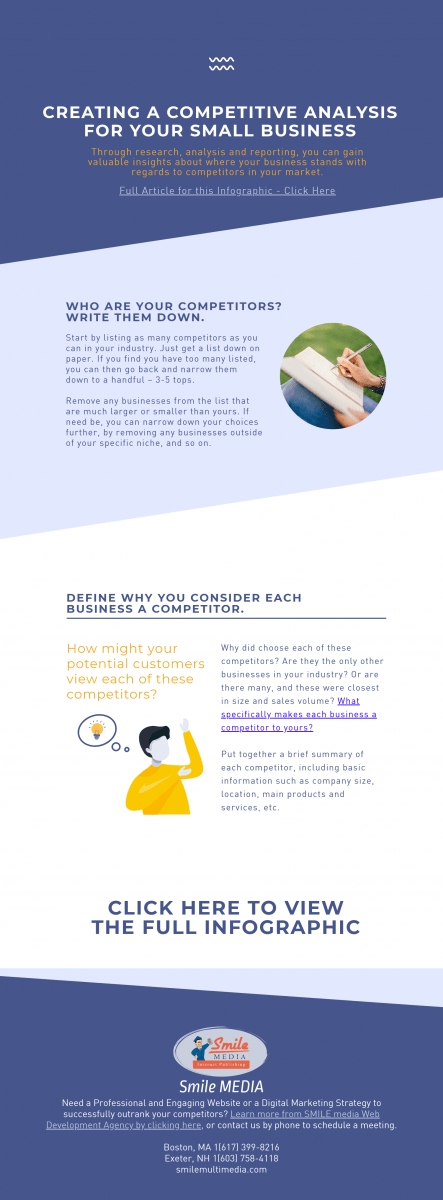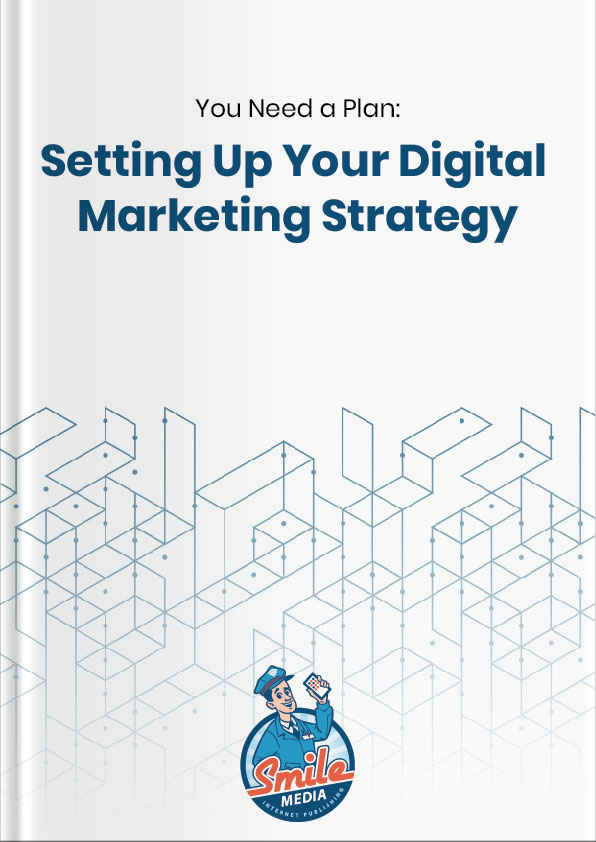If you’re just starting a business, or trying to grow your business by improving your company’s competitive advantage in the market, a good place to start is with creating a competitive analysis report. Through research, analysis and reporting, you can gain valuable insights about where your business stands with regards to competitors in your market.
The words “research” and “analysis” make this helpful document sound much scarier and more difficult to create than it actually is. However, it will require time and effort, if you want to do it right. Let’s walk through the basic steps of creating a competitive analysis for your business, so you can begin to identify the key advantages of your products and services, as well as areas of weakness that can be improved.
1. Who are your competitors? Write them down.
Start by listing as many competitors as you can in your industry. In the beginning, don’t worry so much about the structure or target audience of potential competitors. Just get a list down on paper. If you find you have too many listed, you can then go back and narrow them down to a handful – 3-5 tops. Remove any businesses from the list that are much larger or smaller than yours. If need be, you can narrow down your choices further, by removing any businesses outside of your specific niche, and so on.
2. Define why you consider each business a competitor.
Why did choose each of these competitors? Are they the only other businesses in your industry? Or are there many, and these were closest in size and sales volume? What specifically makes each business competitor to yours? Put together a brief summary of each competitor, including basic information such as company size, location, main products and services, etc. How might your potential customers view each of these competitors?
3. Define what aspects will be compared.
Now that you know a little bit more about your competitors, you should have a better idea of how to compare each of them to your business. For example, if none of your competitors have a tagline, then that isn’t something you’ll be reviewing in your competitive analysis. If your company has a tagline, however, then you will want to note that as a potential competitive advantage.
Common aspects that business compare include: website quality (design, functionality, visibility), brand recognition and reputation, social media presence and engagement, target audience, quality of messaging, marketing techniques, number of products and services offered, pricing strategy, age of company, etc.
4. Analyze their target audience.
Is there a large overlap between your ideal customers and those of your competitor? How are they the same or different? Write down everything you know about their target audience. How old are they? Where do they live? What they do for work? Do they target a specific gender and/or income level?
5. Analyze their marketing messaging.
Based on what you know about their target audience(s), do they create appropriately targeted marketing messaging? Do they have clear messaging, and do they take their audience’s preferences into consideration when delivering content? What formats and platforms do they use to deliver messaging?
6. Compare Pricing.
While pricing is relative to the audience, and value is the most important factor to consider, it is still something that potential customers will compare before making a purchase. That doesn’t mean that your business necessarily has to have the lowest prices, but you do want to make sure they make sense based on the value, and compared to your closest competitors. Make a list of pricing options for your competitors, and do your best to compare them to your business.
7. Define strengths and weaknesses.
What do your competitors do well? What areas need improvement? How could they do what they do better? Does your business do something similar, but better? Why/how does your business do it better? Do they do something better than you? Why/how? Is their pricing more affordable? Do they have a better website? Or, does your business offer a broader range of services, and/or better-quality products/services?
8. Find each competitor’s most unique quality.
Maybe one of your competitors has a really memorable logo and/or tagline. Or, maybe they have a super-active social media following. Another competitor may offer a product that no one else in your market offers. Another may have the lowest pricing. Take a close look at what each company has to offer, and find something that makes them each unique – including your business.
Putting it All Together
Now take all of the information you just gathered, and organize it by competitor. It might be helpful to put everything in an Excel spreadsheet or some other type of chart format, so that you can easily compare the companies and the aspects you’ve chosen to compare.
Creating a competitive analysis for your business can be overwhelming and difficult, especially when you have plenty of other things you could be doing. A professional web design agency can help you compare your business to your competitors. SMILE media is made up of a diverse team of professional web designers in Boston, Exeter, NH, and Dover, NH. Contact us today for a complimentary consultation.










